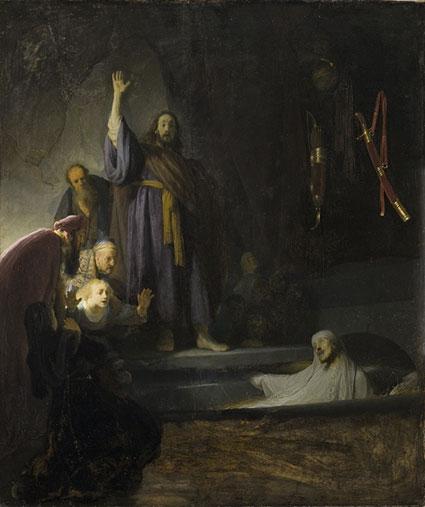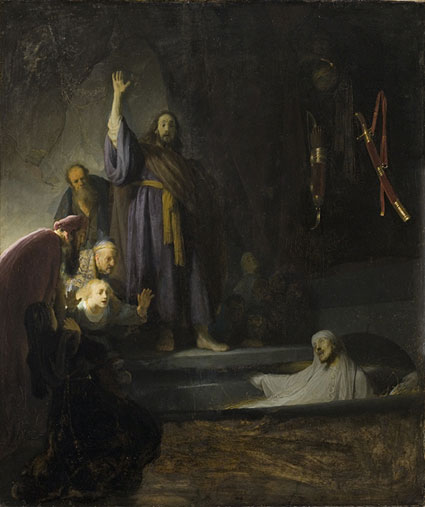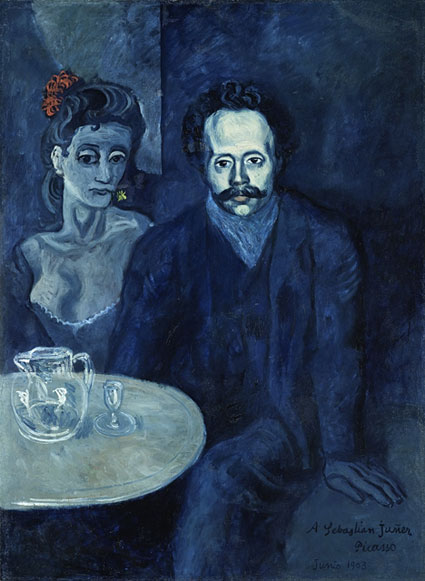Two favorite works make for an interesting comparison: both were extensively reworked but still seem unresolved.
Rembrandt's The Raising of Lazarus, with its dramatic light and brilliant paint application and color, went through various transformations. (The x-ray shows vigorous scraping by the artist of an earlier design in the right side, changes of the figures at lower left, and painting out a cloth once held in Mary's hand.) It is a powerful image that reads from a distance but when looked at closely shows carefully observed details. Imagine creating this work of death and resurrection at age 24. Intriguing for me is that it still seems unresolved; one can feel this tension not only in the subjects but in the contrast between the highly resolved upper part of the painting and the possibly unfinished lower part, where only dark broad brushwork is visible.
Picasso painted his Portrait of Sabastia Juñer Vidal at 22 and it too went through numerous changes, many visible in x-ray. (A dog once sat at the lower left corner—also visible in raking light—before the table was added, and the artist scraped out earlier paint on the right side and repainted.) Juñer's companion was added, it seems, as the painting progressed, and she is painted so differently from Picasso's friend Juñer: He was painted with depth of character in several layers of paint and she superficially in an almost offhand manner to make one ask if she is actually there with Juñer or something of his imagination. The latter results for me in psychological tension compounded by the deep blue color and the feeling of it not being fully resolved.
Though unresolved in my mind, these are still great works of art and great examples of extensive artistic experimentation and development.





